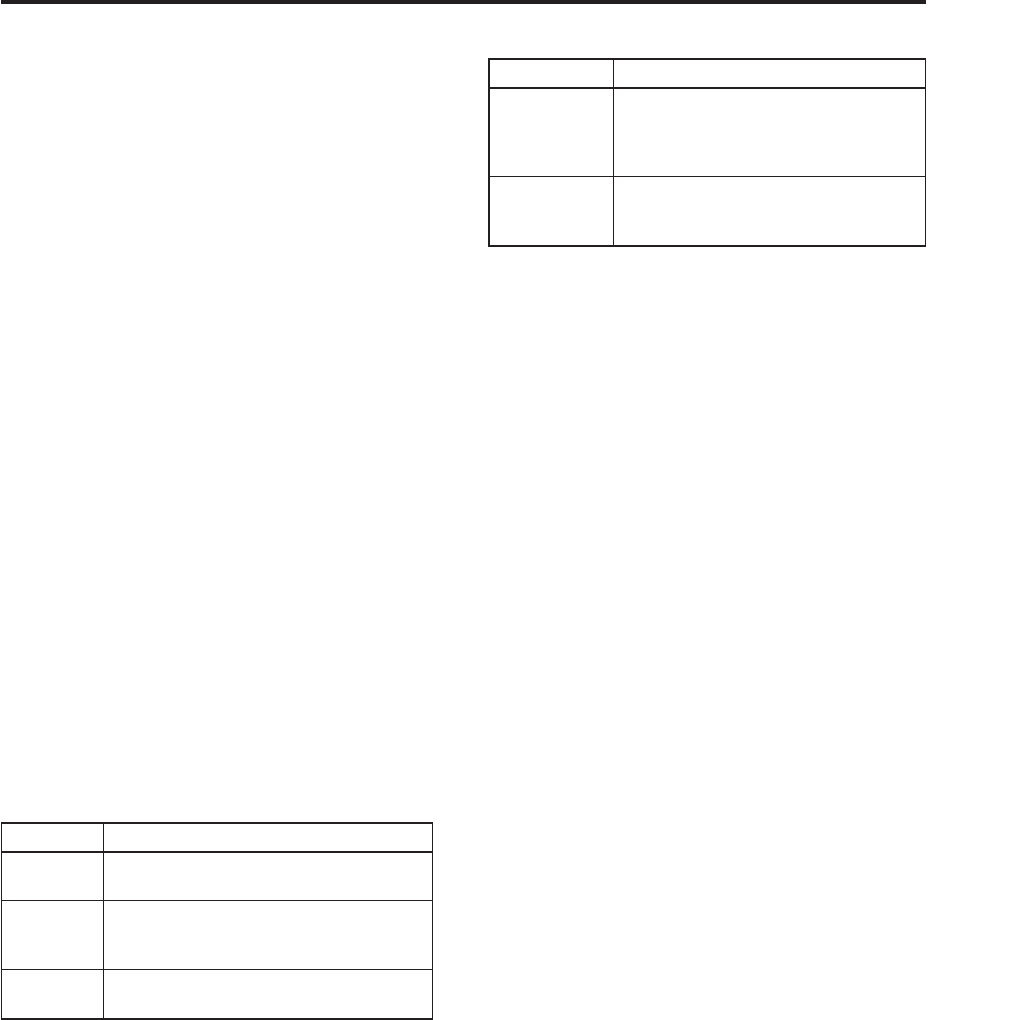
Program P7: KARMA 7–3: Module Parameters-Control
105
This can allow a GE to behave more predictably with
all inversions of a chord. (See “Note Series Group” on
page 900.)
Note: When the GE-Type is Generated-Drum, the
notes come from Drum Patterns and not the Note
Series. The drum patterns can be used to generate
melodies, in addition to drum and percussion grooves.
“Root Position” also has a similar effect on how the
Drum Patterns are transposed, but only if “Drum-
Track Keyboard” is on. For more information, see
“Drum Group” on page 949.
Also when the GE-Type is Generated-Drum, if using
arpeggiated pitch-bending (based on the Note Series),
the resulting pitch bend data will be affected as well.
For more information, see “Bend Group” on page 945.
When the “GE-Type” is Real-time, this parameter has
no effect unless you are using Dynamic MIDI to Direct
Index the Note Series (see “Dynamic MIDI Sources &
Destinations” on page 984).
Note: when “Root Position” is turned on for any “Note
Type” except Regular (i.e. Scalic, Scalic2, Chromatic,
Whole Tone etc.), the behavior is very consistent: the
scale specified by the Note Type is place in root
position before applying the rest of the Note Series
parameters to create the Note Series.
However, when “Root Position” is turned on for “Note
Type” Regular, the behavior is a bit different, and
requires some explanation, as below.
If the input notes span an octave or less, the effect is
very predictable, and similar to the effect when “Note
Type” is any other setting besides Regular.
If the input notes span an octave or less:
If the input notes span more than an octave, the effect
is less predictable. If the “Input Sort” = Up, As Played,
or Random, the first note of each replication will be the
root pitch class (meaning that the Note Series will start
with the root note, i.e. if the key of the chord is D, the
first note will be a D). If the “Input Sort” = Down, then
the last note of each replication will be the root pitch
class. However, notes lower than the root note will still
be allowed, since, after all, the purpose of “Note Type”
= Regular is to collect the notes as played. For example,
with “Input Sort” = Up, if you play G2 – C4 – E4 – G 4
(Cmaj/G), the notes will be ordered so that a C is first,
but the low G will still be present in each replication.
If the input notes span more than an octave:
Note that “Force Range” may be applied in
conjunction with “Root Position.” For example, with
any Force Range setting other than “Off,” the effects of
“Root Position” with “Note Type” = Regular become
quite predictable, as spans greater than an octave are
essentially compressed into one octave before going
into the Note Series section.
Clock Advance
Here you can make settings for the clock that will
operate the KARMA Module. By using these settings
in conjunction with the Dynamic MIDI (Program 7–7)
function, you can use Manual Advance by operating
controllers such as the joystick or notes from the
keyboard to trigger the clock that operates the
KARMA Module, causing the phrase or pattern to
advance under your control.
Mode [Auto, Dyn, Auto+Dyn1, Auto+Dyn2]
Auto: The KARMA Module will operate according to
the Tempo (Program 1–1a) setting. If “MIDI Clock”
(Global 2–1a) is External, the KARMA Module will
operate in synchronization with the MIDI clock from
the External MIDI device. Normally you will select
Auto.
Dyn: The clock by which the KARMA Module will
operate can be triggered by operating the joystick or
other controller according to the Dynamic MIDI
(Program 7–7) setting, causing the phrase or pattern to
advance, note by note. (Set Dynamic MIDI
“Destination” to Clock Advance.)
You can input a chord from one area of the keyboard,
and use notes from another area of the keyboard to
advance through the arpeggio pattern.
Auto+Dyn1: The KARMA Module will operate
according to both Auto and Dyn.
Auto + Dyn2: The KARMA Module will operate
according to both Auto + Dyn, except that a trigger
received from Dynamic MIDI will momentarily stop
the automatic advancement until the KARMA Module
playback is restarted.
Size [3
,
3
,
,
3
,
,
,
3
,
,
,
3
,
,
Event]
This is valid when “Mode” is Dyn, Auto + Dyn1 or
Auto + Dyn2. It specifies the unit by which the phrase
or pattern will be advanced when the controller is
operated.
3…
: The phrase or pattern will be advanced by the
specified note value, synchronized to the rhythm of the
phrase or pattern. Depending on the internal GE
Rhythm Parameters, this may result in no notes, 1 note,
or several notes for a a particular trigger.
Input Sort is: Result on Input Notes before replication:
Up
Notes placed in root position for chord, in
octave of lowest note, sorted in up direction
Down
Notes placed in root position for chord, in
octave of lowest note, sorted in down
direction
As Played
Random
Notes are arranged so the first note is the root
pitch class.
Input Sort is: Result on Input Notes before replication:
Up,
As Played
Random
Notes are arranged so the first note is the
root pitch class (i.e. if the key of the chord is
D, the first note will be a D). Notes lower
than the root note will still be allowed.
Down
Notes are arranged so the last note is the
root pitch class. Notes lower than the root
note will still be allowed.


















